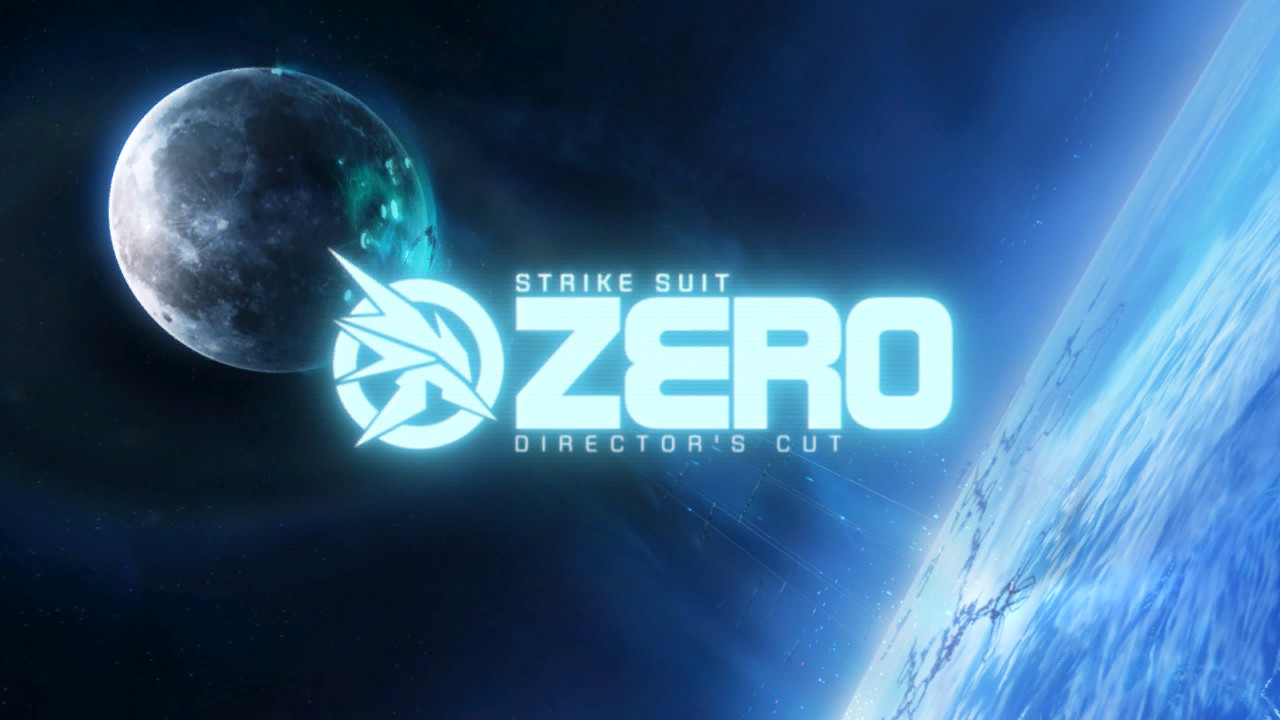Strike Suit Zero:
Director’s Cut
Nintendo Switch
Developed By: Born
Ready Games
Published By: Born Ready Games
Category: Action, Arcade
Release Date: 05.02.19
Strike Suit Zero took Kickstarter by storm a few years back; the campaign took in over $100K by its end. The developers had the worthy dream of reviving interest in space combat sims, a game type which had somewhat fallen by the wayside over the years. While I was never the world’s biggest fan of the genre, I do have fond memories of the X-Wing series, so I thought that taking that formula and adding giant robots to the mix couldn’t possibly make for a disappointment. Strike Suit Zero: Director’s Cut for the Nintendo Switch isn’t exactly a disappointment, but it doesn’t always live up to the promise of its premise. There are no major flaws in SS0, just a lot of little things that erode the appeal of the experience.
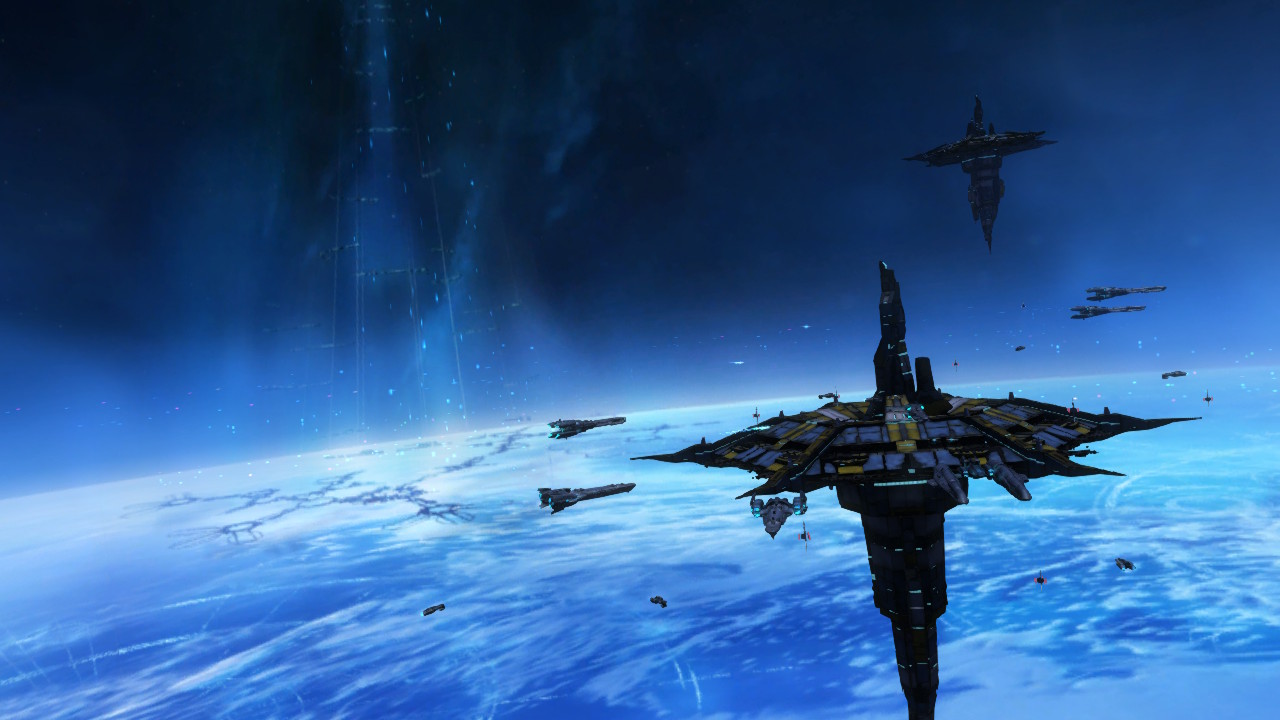
Space, the Final Frontier
It’s the year 2299, and humanity has expanded into the cosmos after discovering an alien signal that shot space travel technology forward. Numerous colonies were established in pursuit of the signal’s source; colonies that prospered, and grew tired of Earth’s governance. A push for independence resulted, which was granted after the fateful discovery of the source of the alien signal; an ancient ship, which the Earth was allowed to study in exchange for the colonies’ independence. The peace proved to be short-lived; after a breakthrough discovery they refused to share, the Earth’s scientists were expelled from the alien ship and a war broke out.
Players take the role of Adams, a pilot for the UNE (United Nations of Earth). After a quick shakedown run to re-familiarize himself with his fighter following a mysterious accident, Adams is sent to a remote scientific outpost where he encounters a mysterious AI trying to protect the Earth’s newest weapon; a transformable fighter craft called a Strike Suit. Jumping behind the stick of his new fighter, Adams fights for the fate of the Earth in a struggle of increasing scale and intensity. Overall, the story isn’t much that a Gundam fan hasn’t seen before, but that doesn’t make it bad by any stretch. You don’t really get a deep, character-driven narrative as much as I generally like in my storylines, but as a simulation of a space war it has the feel of prioritizing the military’s mission over individual goals down pat. The focus is really on the dogfights, as it should be.
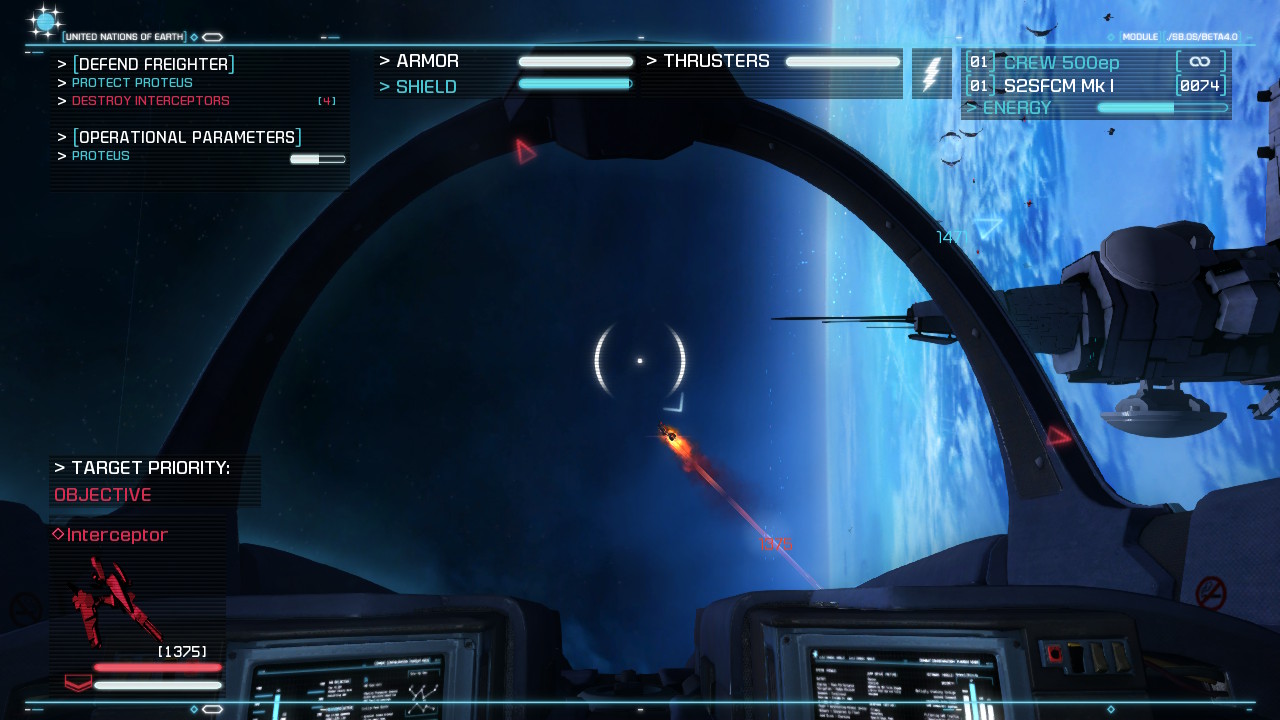
Strike Fast, Strike Hard
I’m at a bit of a disadvantage when comparing SS0 to classic space combat sims; like I said, I haven’t played many. On its own merits, though, I had mixed feelings about the combat at first, but they faded over time. First of all, the controls take some getting used to. Checking the controls is difficult; the game tells you that you can look at the controls and change them in the settings menu, but when you go into the settings menu you can only invert your axes and controller sensitivity. Once I learned them and got used to them it was no problem, but early on if I forgot what button did what I just had to hit buttons until I got what I wanted. That’s not fun to do when you’re surrounded by a dozen enemy fighters.
Once I got into things, however, I began enjoying myself a little more. Whipping around the combat area in pursuit mode (the regular fighter mode) was a lot of fun, and gave me the fast-paced action game I was promised. The challenge was more than enough for me on normal difficulty; free-targeting enemy ships with your plasma cannons, locking on with your missiles, and using EMPs to dodge enemy missiles provided a decent variety to the gameplay that kept fights feeling pretty fresh and fun during every engagement.
Entering strike mode, however, was a different story. Strike mode is the one where your fighter transforms into a mech and its firepower and destructive capability is drastically increased; unfortunately, the speed and challenge of the game drops dramatically when you activate strike mode. You can move around, but not nearly as quickly, and it features an auto-target function that takes the challenge out of dogfighting. You can also only stay transformed while your FLUX energy meter is full; shooting down enemies in pursuit mode replenishes your FLUX meter. So, really, strike mode is best saved for when your back is to the wall and you need to clear out some enemies fast. Now I don’t mind it being a get-out-of-jail-free card, but the reduction in the speed of the action was disappointing. I want my mechs to be lightning-fast engines of destruction; SS0 only gives me half of that equation.
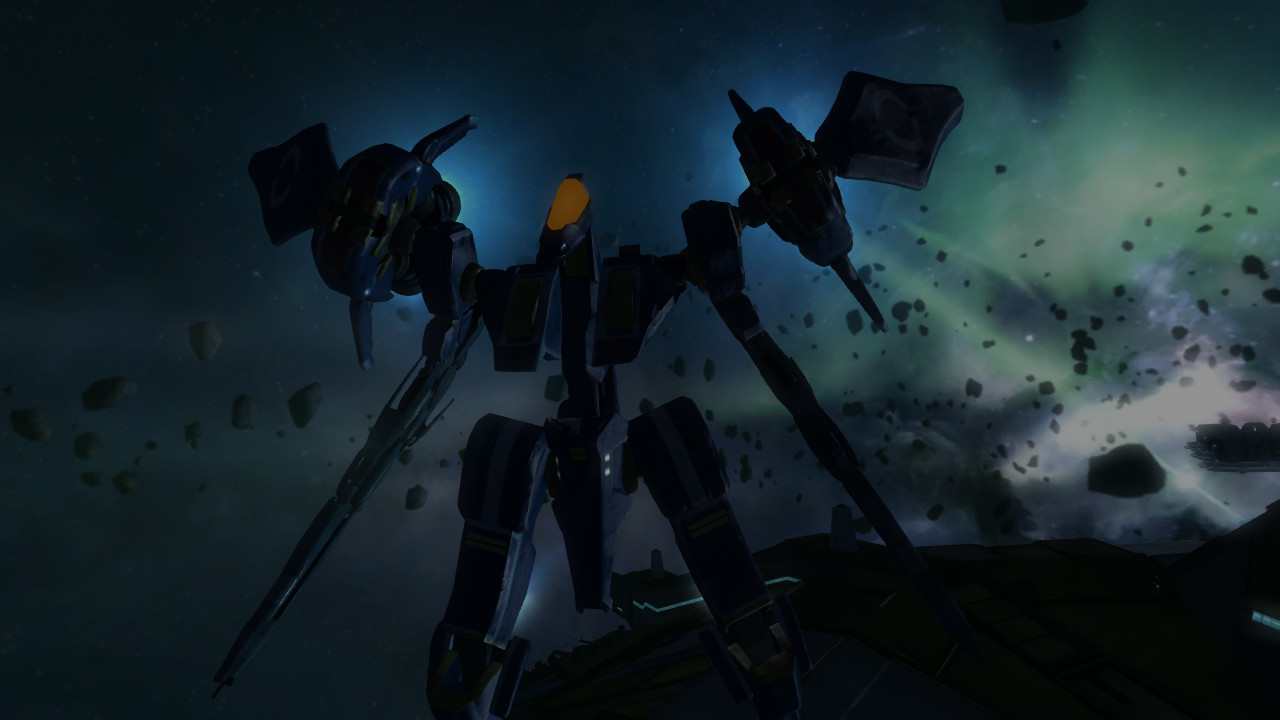
Mission Variety Zero
While the gameplay is pretty fun overall – despite my disappointment with the mech portions of the combat – it doesn’t really offer a lot in the way of variety. Missions basically consist of waves of enemies coming at you, and while there are fighters, bombers, and all manner of capital ships to shoot down, the missions start to feel kind of same-y after a while. The gameplay doesn’t really inspire enough interest to make long play sessions; after maybe one to two hours I’ve had my fill. There are thirteen missions in the base game, and five more in the DLC (already included on the Switch), so there is some longevity to the game. Replayability is encouraged via medals given for your performance after a mission, ship upgrades that unlock when certain battle conditions are met, and online leaderboards, but I don’t know if that is enough to draw me back into the game once I’ve finished the story.
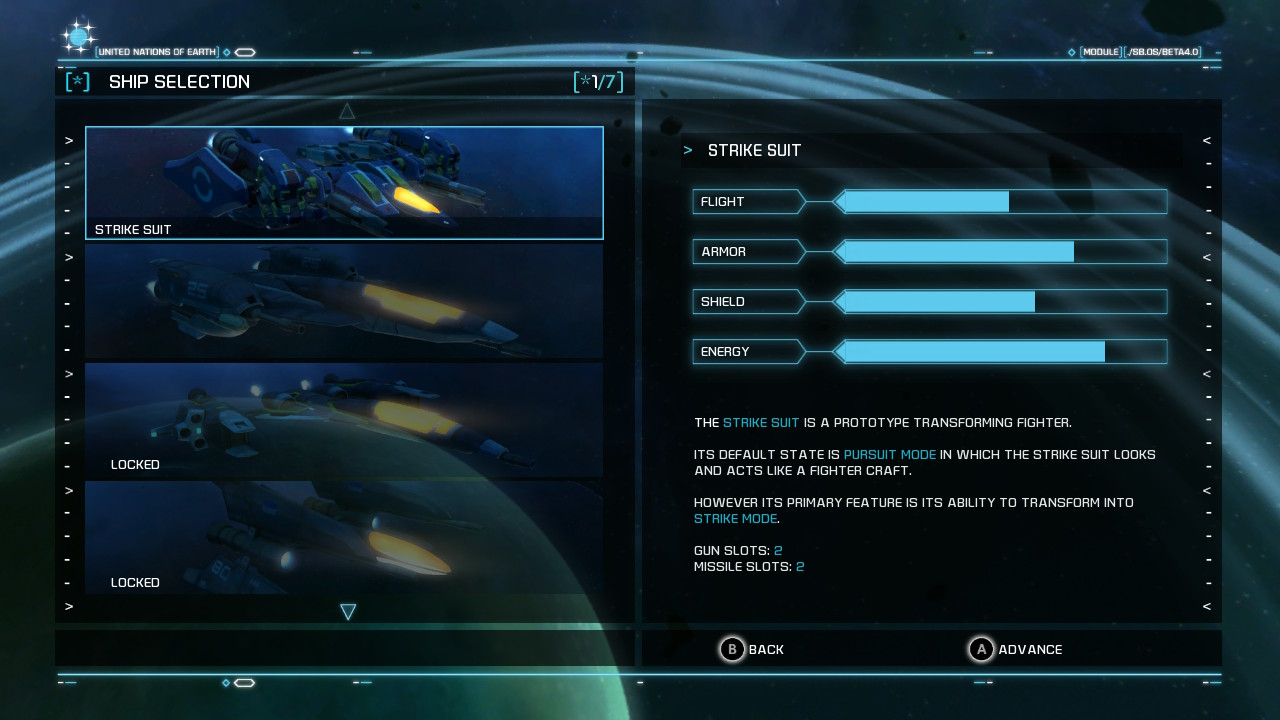
Striking Suits? Way More Than Zero
So I had some problems with the gameplay execution (but I still liked it overall), but I’ve got no complaints about the game’s art direction. The designs for both the strike suits and capital ships are outstandingly cool; I’m a huge nerd for a cool mech, especially if it transforms. I thought it was especially cool how the fighter jet mode’s cockpit was integrated into the strike mode’s design. And then there are the backgrounds! The endless expanse of space is a hard thing to make look cool sometimes; it’s just a big black expanse of nothing with a few dots. SS0 makes sure to set its battles close to planets or stars or clusters of space colonies so that there is always something cool to see in the background. The exploding planet in the second mission is especially stunning.
The music is similarly well-designed. The game features multiple electronic tracks mixed in with some more traditional instrumental songs. Some feature vocals, which is kind of cool, but it creates something of a problem with the game’s voiceover dialogue if you don’t change the game’s default settings. I’d also recommend turning on subtitles; the default levels make it difficult to hear the story, which often plays out during battle. Music can also drown out dialogue if the settings aren’t adjusted. But adjusting the volume levels of different audio aspects is ridiculously easy, so I can’t really register this as a problem. I’m just giving you a heads up.
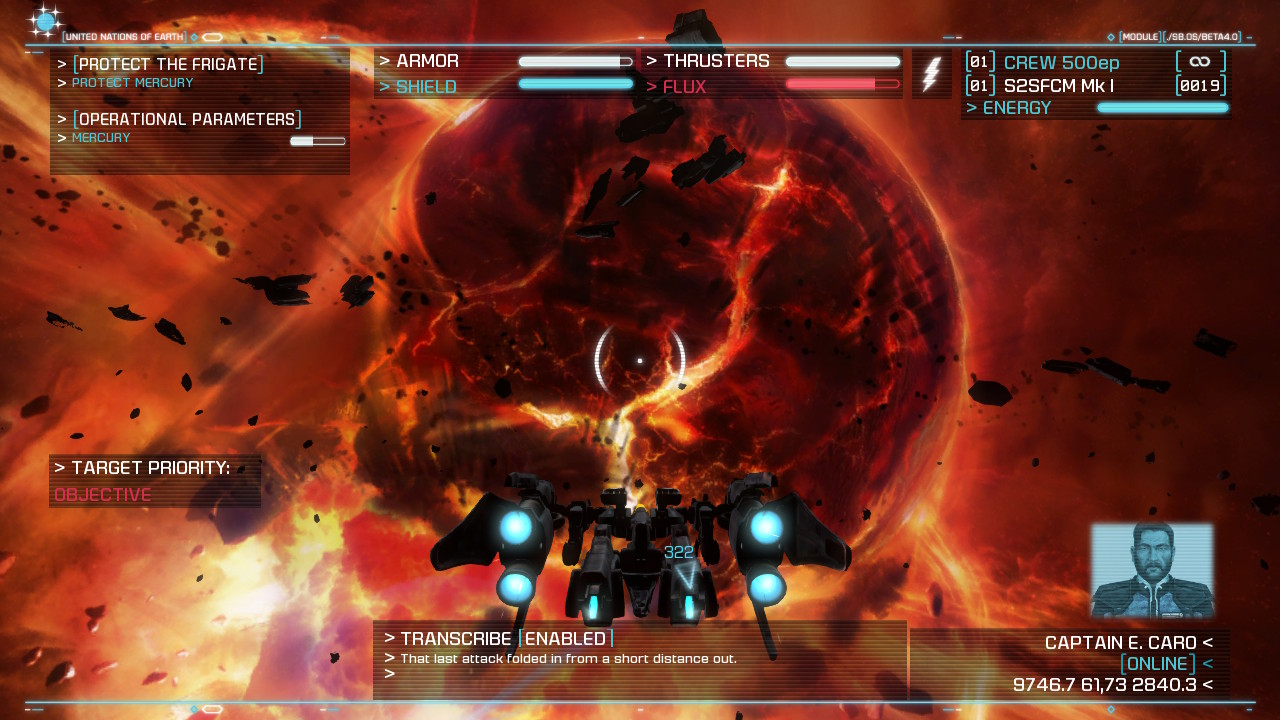
Playability
Strike Suit Zero: Director’s Cut doesn’t have any touch or motion controls to make use of, so you can play it docked or undocked as you prefer. Personally, I preferred playing it docked to better see the impressive background art. Again I’ll mention that you should definitely play with the audio levels to find something that you are comfortable with, and I’ll also re-recommend turning on subtitles just in case. The subtitles are a little on the small side, but I didn’t have any real problems reading them.
TL;DR: Great core ideas and art direction, but a lack of mission variety and lackluster mech portions of combat hold it back.





Buy Strike Suit Zero: Director’s Cut
$19.99
Follow Born Ready Games

[Review] KONOSUBA – God’s Blessing on this Wonderful World! Love For These Clothes Of Desire! – Nintendo Switch

Developed By: MAGES. Inc. Published By: PQube Categories: Visual Novel…

